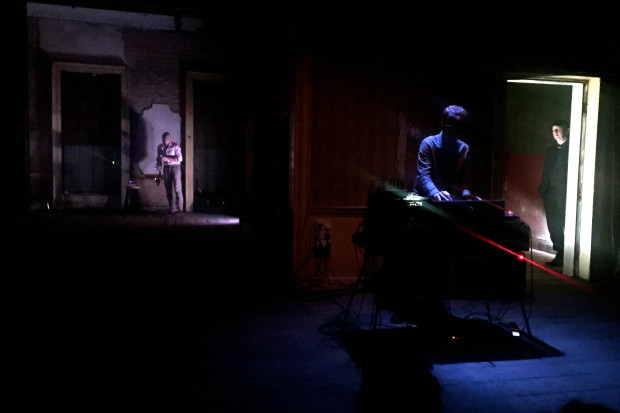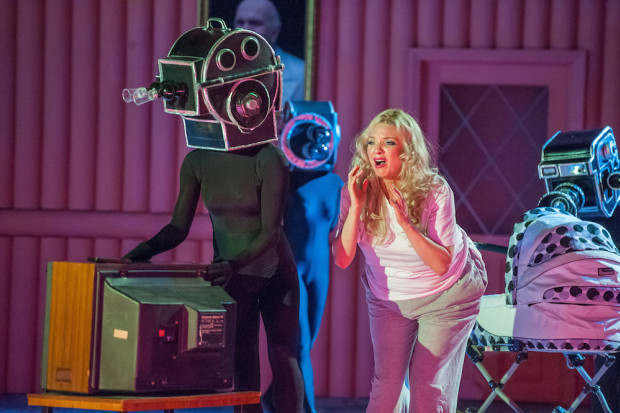Live Reviews: Concorde
Hugh Lane Municipal Gallery of Modern Art, 15 June 2003
Erkki-Sven Tuur – Architectonics VII (1993)
Rob Canning – Room full of Mirrors (2001)
Sofia Gubaidulina – Silenzio (1991)
Ed Bennett – No Attachment to Dust (2001)
This concert brought together two well-established Eastern European composers with two young Irish composers, including the Irish premiere of Ed Bennett’s No Attachment to Dust.
Erkki-Sven Tuur’s Arhitectonics VII appeared in this concert re-orchestrated from flute, cello and harpsichord to flute, bass clarinet and piano. Normally this would not be of huge interest, but this change highlighted elements of the piece that made me instantly think of Arvo Part; both composers have lived in Talinn, Estonia. As much as I dislike the idea that any composer be piegeonholed by notions like ‘national style’, there was much use of Partian melodic contours (perhaps a common folk influence) but more prominent was the use of an ascending minor triad arpeggio across several octaves in the piano as a structural pillar that the music keeps returning to; this would be much less prominent in the harpsichord version. That aside, Architectonics VII is an interesting piece with a clear structure that oscillates between modal writing and more
Rob Canning’s piece for piano and 4-track tape was a duet (or more!) of sorts, played here by Concorde director Jane O’Leary against the original tape part recorded by Finghin Collins. Room full of Mirrors is an object lesson in expansion and prolongation: the live and pre-recorded parts share the same material set out as gestures through which the pianist charts their own path, the tape part subtly manipulates the material with subtle electroacoustic effects while the various tracks orbit the audience via the speaker setup. The two movements differ in texture with the first using mainly single sustained pitches and sparse runs while the second is more lush, but in both, the consistent texture allows the individual gestures to come through and highlights correlations between the live and tape parts that are randomly generated. The whole soundworld is gorgeously resonant both structurally and acoustically with rich overtones and complex layered harmonies that reflects its title as an almost perfect analogue.
Sofia Gubaidulina’s music is rarely performed here for such a big name and it’s also nice to see an instrument with as much cultural baggage as the accordion given a new lease of life. The five short movements of Silenzio respect the title and hold an air of plaintive austerity, even the fast movement never rises above piano with its pitter-patter pizzicato from violin and cello and shivering accordion chords. The piece is based around textural variants and ur-melodies – oscillating around two or three pitches, vocal in character – mixed with clusters and strange drones. The final movement is more passionate and invokes late Shostakovich, but never moving to rage, only the mournful.
No Attachment to Dust used a larger ensemble (fl/pic, ob, cl, vln, vc, acc, perc) almost throughout as a block of shifting texture where snaking arpeggios arc up to a common high register cluster that resonated beautifully in the Hugh Lane. Gestures stand out against this mass of sound to great effect, especially the mogadon string glissando that transformed the entire spectrum and the interplay between constant pulse and grace note arpeggio. This strong pulse element was refreshing in the context of fast-paced contemporary music by transcending the usual cliches (Stravinsky, Bartok, Minimalism): although Bennett may owe a nod to Ligeti’s ‘clocks’ style, No Attachment to Dust isn’t solely concerned with the rhythmic element and uses it as a platform for music made static by speed. The piece could have ended a little more abruptly and felt a little stranded in the final minute or so as the pulse and energy dropped away. Perhaps this is more my expectation, that fast pieces should burst at the end having run on such high energy, and a minor quibble in a music propelled by constant invention.
Though only a decade separates the pieces in this concert, the generational gap is more apparent in the structural thinking between the (relatively) old and new, where the effect of electroacoustic thinking is becoming more apparent in new music and bringing new blood to old pitches.
Published on 1 July 2003
Scott McLaughlin is an Irish composer.












